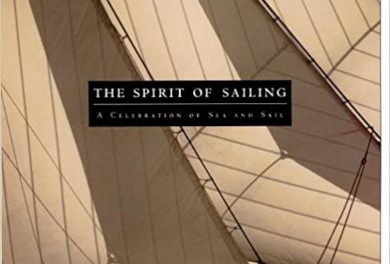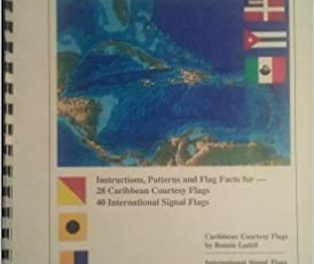
High Latitude, North Atlantic briefly chronicles the discovery, settlement, anthropology, and history of the barren lands from north of Alaska across the Canadian Arctic and the Atlantic to northern Scandinavia. Because it is the sea that ties together these isolated outposts, it is fitting that the tale be told from the deck, well actually from the sheltered pilothouse, of an ocean-capable sailing vessel.
John Bockstoce skippered Belvedere, a much-modified 60-foot steel motorsailer, through a dozen summers in the waters of Scotland, Norway, Greenland, Iceland, and northern Canada (one chapter was set aboard the motor vesssel Itasca, a 175-foot former North Sea oil rig supply ship converted to a yacht and strengthened for ice.)
John’s credentials are impeccable. With more than 20 seasons in the northern oceans, he has completed the Northwest Passage a remarkable three times! Few have more experience or better-honed skills for navigating the treacherous ice-infested waters of the North Atlantic. But even more than a sailor, Bockstoce is a respected Arctic historian. He holds a doctorate in archeology from Oxford, was curator of Arctic collections at the New Bedford Whaling Museum in Massachusetts, and his book credits list nine other academic works.
This unusual combination of aptitudes creates a dilemma for a reviewer . . . High Latitude, North Atlantic may be too much of a sailing epic for archeologists and maritime history buffs and too much of a history lesson for armchair adventure sailing enthusiasts. John walks the line well, but I would easily have tolerated a much longer book to have more details about the challenging passages, treacherous anchorages, and thoroughly inhospitable weather endemic to the North Atlantic. There can be no doubt that the “rough spots” nonchalantly described by John Bockstoce were more likely horrifying ordeals. His understated style reflects his professional training as an historian: present the facts, don’t embellish them.
Sailors in more temperate waters write of encounters with dolphins, sea turtles, and exotic reef fish. The non-human characters in High Latitude, North Atlantic include beluga whales, reindeer, and polar bears. John describes two encounters between his inflatable dinghy and marauding polar bears. The first, in Northern Labrador, resulted in a small bite-inflicted puncture near the end of the boat’s sponson.
He recounts the unwillingness of the inflatable repair center personnel in Rhode Island to believe that the damage was caused by a polar bear bite. The second, two years later, resulted in another bite and another limp dinghy. ” In September the life-raft repairmen, seeing our battle-scarred dinghy for a second time, now believed our story about how it had been violated.”
This is a beautiful book, printed on glossy paper with scores of the author’s spectacular color and black-and-white photographs. Because the voyages are so grand, the setting for each chapter is marked on a satellite-photo globe with detail provided by larger-scale maps. Viewing the Earth from a perspective above the North Pole takes some getting used to. Nevertheless, the book cries out for more — and more detailed — charts. As you would expect from an academic author, each chapter is thoroughly referenced, and appendices provide a detailed description of Belvedere’s remarkable modifications and a chronology of the North Atlantic history from Irish monks reaching the Faroe Islands ca. 700 to the first surface crossing of the Arctic Ocean and the North Pole by the American and Canadian Ice breakers USCGC Polar Sea and CCGS Louis S. St. Laurent in 1994.
John Bockstoce’s history of the North Atlantic depicts the rugged, daring men and women who braved unforgiving climate and seas to settle and commercialize one of the most inhospitable regions on the globe. High Latitude, North Atlantic is a fascinating blend of nautical adventure and history, and should be considered essential reading to any still clinging the misconception that Christopher Columbus was the first to reach the New World in 1492. A great read any time, you will especially enjoy it during the hottest days of summer!
High Latitude, North Atlantic, 30,000 Miles Through Cold Seas and History by John R Bockstoce (Mystic Seaport, 2003; 216 pages)




